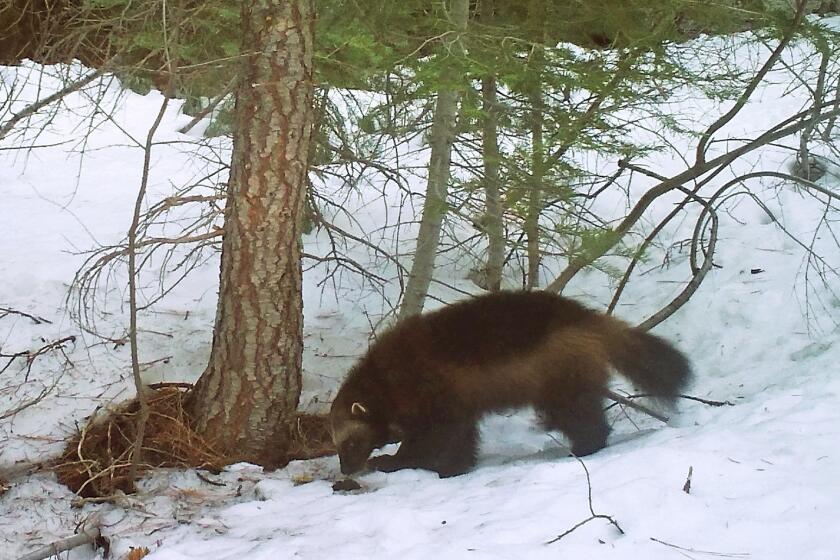How do animals react during a total solar eclipse? Scientists plan to find out in April

When a total solar eclipse transforms day into night, will tortoises start acting romantic? Will giraffes gallop? Will apes sing odd notes?
Researchers will be standing by to observe how animals’ routines at the Fort Worth Zoo in Texas are disrupted when skies dim on April 8. They previously detected other strange animal behaviors in 2017 at a South Carolina zoo that was in the path of total darkness.
“To our astonishment, most of the animals did surprising things,” said Adam Hartstone-Rose, a North Carolina State University researcher who led the observations published in the journal Animals.
Although there are many individual sightings of critters behaving bizarrely during historic eclipses, only in recent years have scientists started to rigorously study the altered behaviors of wild, domestic and zoo animals.
Much of the United States will experience a total solar eclipse, when for just a few minutes the moon completely blocks the sun, on April 8.
Seven years ago, Galapagos tortoises at the Riverbanks Zoo in Columbia, S.C., “that generally do absolutely nothing all day … during the peak of the eclipse, they all started breeding,” Hartstone-Rose said. The cause of the behavior is still unclear.
A mated pair of Siamangs, gibbons that usually call to each other in the morning, sang unusual tunes during the afternoon eclipse. A few male giraffes began to gallop in “apparent anxiety.” The flamingos huddled around their juveniles.
We humans weren’t the only life-forms to be affected by the Great American Eclipse on Monday.
Researchers say many animals display behaviors connected with an early dusk.
In April, Hartstone-Rose’s team plans to study similar species in Texas to see whether the behaviors they witnessed in South Carolina point to larger patterns.
Several other zoos along the path are also inviting visitors to help track animals, including zoos in Little Rock, Ark.; Toledo, Ohio; and Indianapolis.
This year’s full solar eclipse in North America crisscrosses a different route than in 2017 and occurs in a different season, giving researchers and citizen scientists opportunities to observe new habits.
“It’s really high stakes. We have a really short period to observe them, and we can’t repeat the experiment,” said Jennifer Tsuruda, a University of Tennessee entomologist who observed honeybee colonies during the 2017 eclipse.
The honeybees decreased foraging during the eclipse as they usually would at night, except for those from the hungriest hives.
“During a solar eclipse, there’s a conflict between their internal rhythms and external environment,” said University of Alberta’s Olav Rueppell, adding that bees rely on polarized light from the sun to navigate.
Nate Bickford, an animal researcher at the Oregon Institute of Technology, said that “solar eclipses actually mimic short, fast-moving storms,” when skies darken and many animals take shelter.
After the 2017 eclipse, he analyzed data from tracking devices on wild species to study habitat use. Flying bald eagles change the speed and direction they’re moving during an eclipse, he said. So do feral horses, “probably taking cover, responding to the possibility of a storm out on the open plains.”
The last full U.S. solar eclipse to span coast to coast happened in late summer, in August. The eclipse in April gives researchers an opportunity to ask new questions, including about potential effects on spring migration.
Most songbird species migrate at night. “When there are night-like conditions during the eclipse, will birds think it’s time to migrate and take flight?” Andrew Farnsworth of Cornell University asked.
His team plans to test this by analyzing weather radar data — which also detect the presence of flying birds, bats and insects — to see whether more birds take wing during the eclipse.
As for indoor pets, they may react as much to what their owners are doing — whether they’re excited or nonchalant about the eclipse — as to any changes in the sky, University of Arkansas animal researcher Raffaela Lesch said.
“Dogs and cats pay a lot of attention to us, in addition to their internal clocks,” she said.
Larson writes for the Associated Press.
More to Read
Start your day right
Sign up for Essential California for news, features and recommendations from the L.A. Times and beyond in your inbox six days a week.
You may occasionally receive promotional content from the Los Angeles Times.







